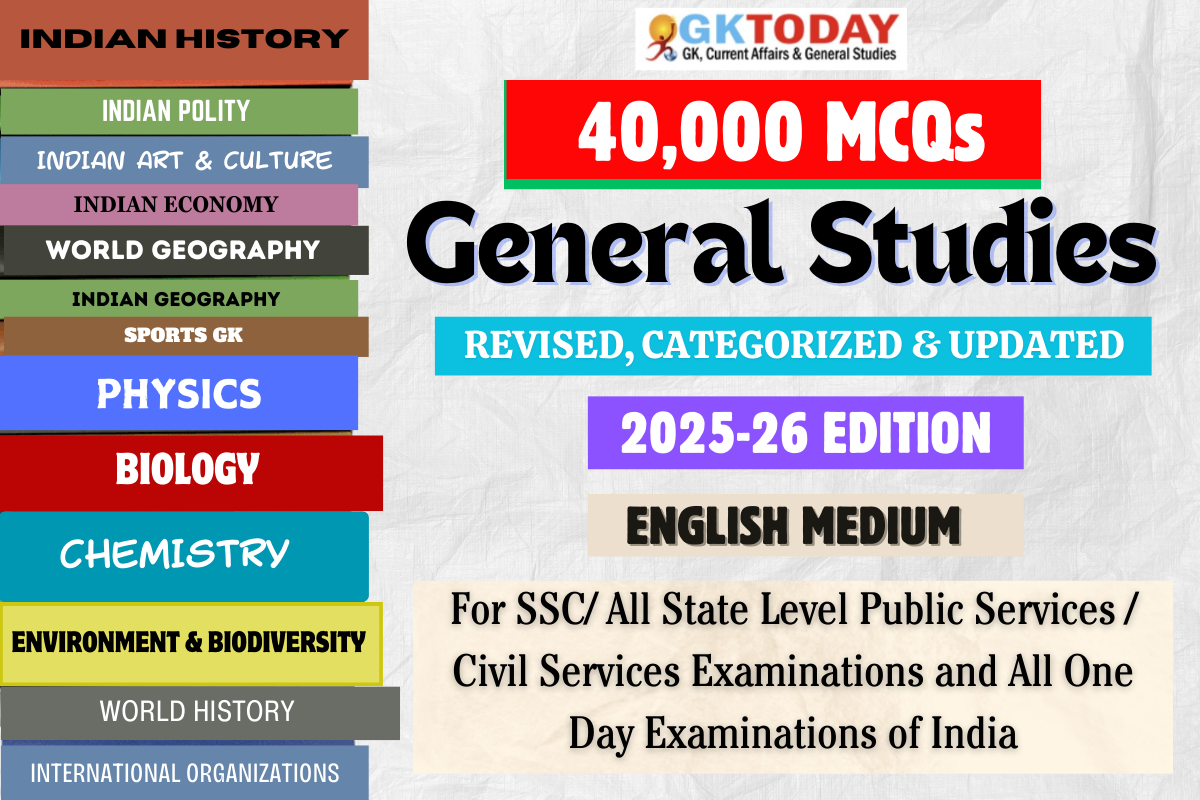1. Which among the following agencies is not based in Basel, Switzerland?
[A] Bank for International Settlements ( BIS)
[B] Financial Stability Forum (FSF)
[C] Organization for Economic Co-operation and Development (OECD)
[D] None of the above
Show Answer
Correct Answer: C [Organization for Economic Co-operation and Development (OECD)]
Notes:
The Organization for Economic Co-operation and Development (OECD) is not based in Basel, Switzerland. it is headquartered in Paris, France. The Bank for International Settlements (BIS) and the Financial Stability Forum (FSF) are both located in Basel. The OECD, established in 1961, focuses on economic development and policy coordination among member countries.
2. Which among the following PSU in India specializes in missile and torpedo design and production?
[A] Defense Research and Development Organization
[B] Bharat Electronics Limited
[C] Bharat Dynamics Limited
[D] Hindustan Aeronautics Limited
Show Answer
Correct Answer: C [Bharat Dynamics Limited]
Notes:
Bharat Dynamics Limited specializes in missile and torpedo design and production. Bharat Dynamics Limited (BDL) is a Public Sector Undertaking (PSU) in India that is primarily involved in the manufacture of ammunition and missile systems. It plays a key role in the country’s defense sector, particularly in the development and production of advanced weapons like missiles and torpedoes.
3. Which among the following is oldest ?
[A] Border security force
[B] Central Reserve Police Force
[C] Assam Rifles
[D] National Security Guards
Show Answer
Correct Answer: C [Assam Rifles]
Notes:
[A] Border Security Force (BSF): Established on December 1, 1965.
[B] Central Reserve Police Force (CRPF): Established on July 27, 1939.
[C] Assam Rifles: Formed in 1835 as the Cachar Levy, it was later renamed as the Assam Rifles in 1917.
[D] National Security Guards (NSG): Established in 1984.
So, the Assam Rifles is the oldest among these organizations, with its origins dating back to the 19th century.
4. Which among the following dates is observed as World Wetlands Day?
[A] February 2
[B] March 2
[C] April 2
[D] May 2
Show Answer
Correct Answer: A [February 2]
Notes:
World Wetlands Day is celebrated annually on February 2nd. The day marks the adoption of the Convention on Wetlands on February 2, 1971 in the Iranian city of Ramsar. The day is celebrated to raise awareness of the importance of wetlands for people and the planet.
5. Bandung Conference which was an important step toward the crystallization of the Non-Aligned Movement was organized by Asian and African states, most of which were newly independent. Which among the following participant of the Bandung Conference in 1955, was not an independent state at that time?
[A] Ceylon
[B] Cyprus
[C] Laos
[D] Liberia
Show Answer
Correct Answer: B [Cyprus]
Notes:
Please note that Cyprus got independence in 1960, after an agreement in Zurich and London between the United Kingdom, Greece and Turkey
6. Nomadic Elephant is joint counter-insurgency exercise between India and:
[A] Malaysia
[B] Sri Lanka
[C] Mongolia
[D] Myanmar
Show Answer
Correct Answer: C [Mongolia]
Notes:
“Nomadic Elephant” is a joint military exercise focusing on counter-insurgency and counter-terrorism operations between India and Mongolia. This exercise is part of a series of military cooperation activities undertaken by the Indian Army with various countries and is aimed at enhancing military cooperation and interoperability, particularly in areas related to counter-insurgency and counter-terrorism.
7. Who is recognized as the author of the book, Shahjahanama?
[A] Inayat Khan
[B] Dara Shikoh
[C] Abul Fazal
[D] Kamgar Khan
Show Answer
Correct Answer: A [Inayat Khan]
Notes:
Shahjahanama is a book narrating the life of the Mughal Emperor Shahjahan, and the author of this comprehensive account is Inayat Khan. The book is of significant important to historians as it offers an insight into the rule and life of one of the most influential Mughal Emperors.
8. Which of the following was the earlier name of WTO?
[A] UNCTAD
[B] GATT
[C] UNIDO
[D] OECD
Show Answer
Correct Answer: B [GATT]
Notes:
The WTO’s predecessor, the General Agreement on Tariffs and Trade (GATT), was established by a multilateral treaty of 23 countries in 1947 after World War II in the wake of other new multilateral institutions dedicated to international economic cooperation—such as the World Bank (founded 1944).
9. With reference to Indian defence, which one of the following statements is not correct?
[A] With the induction of Prithvi II, the IAF is the only airforce in the world with surface-to-surface ballistic missiles under its command
[B] Sukhoi-30 MKI jet fighters can launch air-to-air and air-to-surface precision missiles
[C] Trishul is a supersonic surface to-air missile-with a range of 30 km
[D] The indigenously built INS Prabal can launch surface-to-surface missiles
Show Answer
Correct Answer: A [With the induction of Prithvi II, the IAF is the only airforce in the world with surface-to-surface ballistic missiles under its command]
Notes:
With the induction of Prithvi-II, the IAF is the only air force in the world with surface to surface ballistic missiles under its command.
10. Which city is to organise 15th meeting of the Governing Council of South Asia Co-operative Environment Programme?
[A] Kathmandu
[B] Colombo
[C] New Delhi
[D] Dhaka
Show Answer
Correct Answer: D [Dhaka]
Notes:
15th meeting of the Governing Council of South Asia Co-operative Environment Programme, SACEP will took place in Dhaka. The SACEP is an inter-governmental organization which was established in 1982. Its member countries Afghanistan, Bangladesh, Bhutan, India, Maldives, Nepal, Pakistan and Sri Lanka aim to promote and support protection, management and enhancement of the environment in the region. The 14th meeting of the SACEP Governing Council was held in Colombo.

